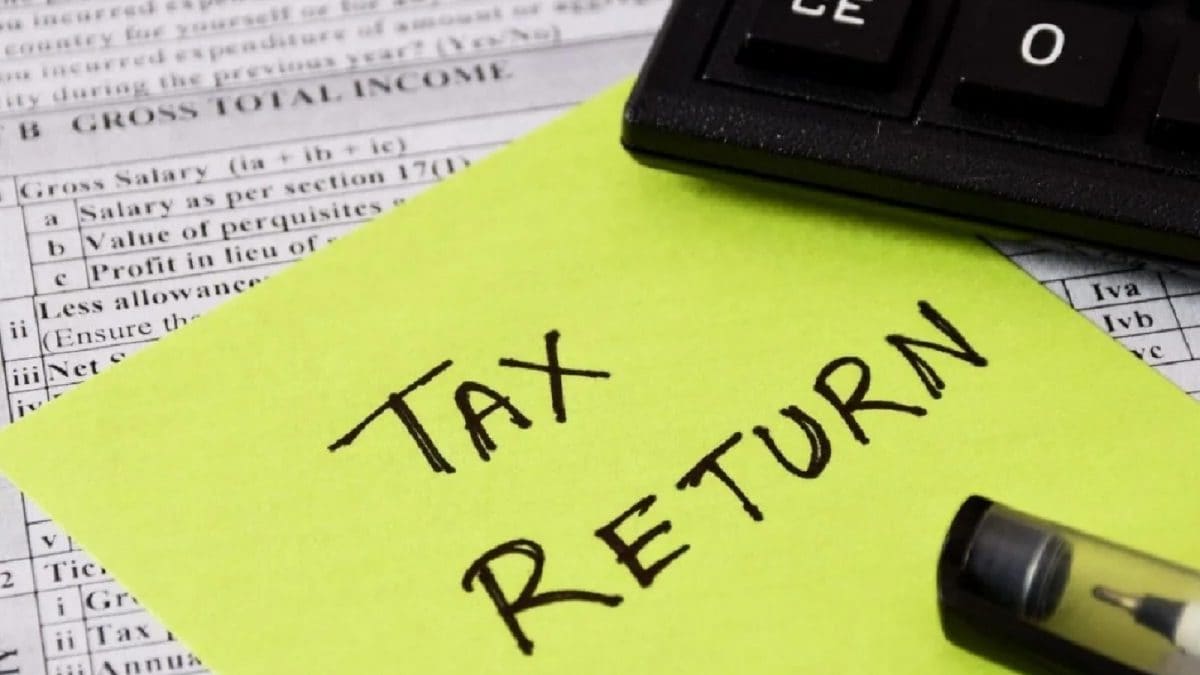Last Updated:
Income Tax Return AY 2025-26: The ITR-1 form has been overhauled, and taxpayers with long-term capital gains up to Rs 1.25 lakh under Section 112A can file ITR-1, instead of ITR-2.

As the government has notified the ITR-1 (Sahaj) and ITR-4 (Sugam) forms, the income tax department will soon enable income tax return filing for FY 2024-25 (or AY 2025-26) on its portal.
Income Tax Return Filing AY 2025-26: The ITR forms 1 and 4 have been notified by the income tax department after a long wait. The ITR-1 (Sahaj) form to file income tax return has been overhauled this year, and the taxpayers with long-term capital gains under Section 112A within the threshold will be able to file ITR-1. Earlier, such taxpayers were required to file ITR-2 to report capital gains.
As the government has notified the ITR-1 (Sahaj) and ITR-4 (Sugam) forms, the income tax department will soon enable income tax returns filing for the financial year 2024-25 (or assessment year 2025-26) on its portal, both offline and online.
The official notification for ITR-1 and ITR-4 forms can be accessed from here.
ITR-1: Section 112A Long-Term Capital Gains (LTCG) Included
According to the ITR-1 form notified by the government, there is a column which reads: “Income on which no tax is payable: Long Term capital gains u/s 112A not chargeable to Income-tax.”
It is important to note that taxpayers with LTCG on listed securities (Section 112A) within the threshold limit of Rs 1.25 lakh can file ITR-1. However, it is also not applicable on short-term capital gains, LTCG from immovable properties, or LTCG under Section 112A on which tax is liable.
According to the notification, ITR-1 does not apply to those also who have any brought forward loss or loss to be carried forward.
Section 112A provides for LTCG tax on the sale of listed equity shares, equity-oriented mutual funds and business trust. For the financial year 2024-25, the LTCG tax rate is 12.5 per cent. However, LTCG up to Rs 1.25 lakh is exempt.
“In a significant shift from previous years, the newly notified ITR-1 form now allows taxpayers to declare long-term capital gains of up to Rs 1.25 lakh under Section 112A of the Income Tax Act — applicable to gains from the sale of listed equity shares and mutual funds. This is a simplification aimed at easing the compliance burden specially for taxpayers who previously had to use more complex ITR forms even for small, exempted long-term gains,” Rajarshi Dasgupta, executive director (tax) of AQUILAW.
He, however, added that other types of capital gains, such as short-term gains or long-term gains from the sale of immovable property, must still be reported in the more detailed forms like ITR-2, ITR-3, and ITR-4 for individuals and HUFs, and ITR-5 or ITR-6 for firms, associations, and companies.
“While ITR-1 and ITR-4 have been made available, taxpayers are still awaiting the notification of the remaining ITR forms needed for comprehensive return filing,” Dasgupta said.
ITR-1 Vs ITR-4: Which One Should You Choose?
Selecting the correct income tax return (ITR) form holds significant importance for both individuals and businesses. It ensures adherence to tax laws, minimising the likelihood of penalties or legal issues. Tailored to various taxpayer categories, including individuals, businesses, and organisations, each ITR form collects pertinent details on income, deductions, exemptions, and tax obligations.
Who is eligible to file ITR-1 Sahaj?
According to the notified forms, ITR-1 can be filed by a resident individual whose:
- Total income does not exceed Rs 50 lakh during the FY.
- Income is from salary, one house property, family pension income
- Long-term capital gains up to Rs 1.25 lakh under Section 112A.
- Agricultural income (up to Rs 5,000)
- Other sources, including interest income.
ITR 4 Sugam
Who is eligible to file ITR-4?
ITR-4 is for resident individuals, HUFs and firms (other than LLP) having total income up to Rs 50 lakh and having income from business and profession which is computed under Sections 44AD, 44ADA or 44AE and agricultural income up to Rs 5,000.
ITR-4 can be filed by a Resident Individual / HUF / Firm (other than LLP) who has:
- Income not exceeding Rs 50 Lakh during the FY
- Income from Business and Profession which is computed on a presumptive basis u/s 44AD, 44ADA or 44AE
- Income from Salary/Pension, one House Property, Agricultural Income (up to Rs 5,000/-)
- Other sources include (excluding winning from Lottery and Income from Race Horses):-Interest from Savings Account-Interest from Deposit (Bank / Post Office / Cooperative Society)-Interest from Income Tax Refund-Family Pension-Interest received on enhanced compensation-Any other Interest Income (e.g., Interest Income from an unsecured loan)
Documents To Keep Ready Before Filing ITR
PAN and Aadhaar Card, Form 16, Form 26AS and AIS (annual information statement), bank account details, interest certificates, investment proofs for deductions (Section 80C, 80D, etc.) if going for old tax regime, home loan & property-related documents (if applicable), capital gains statements, foreign income & assets (if applicable), business or freelance income details, advance tax and self-assessment tax challans, old tax notices and previous year ITR.
When Will You Receive Form 16?
For AY 2025–26 (covering income earned during the financial year 2024–25), the ITR offline and online filing is likely to be enabled soon. However, it’s important to note that while the filing portal may open in May, most salaried individuals actually begin filing a little later — usually after they receive their Form 16.
Form 16 is a critical document for salaried taxpayers. It is issued by employers and provides a detailed summary of the salary paid and the tax deducted at source (TDS) during the financial year. As per the income tax rules, employers must issue Form 16 by June 15, 2025.
#Income #Tax #Return #Forms #ITR #Forms #Notified #Choose #Filing










